An Interview with Bradley Sadler MD, MS, PCC
By Adrienne Harvey, SrPCC, RKC-II, CK-FMS
Dragon Door: How did you first get interested in calisthenics?
Bradley Sadler: I ran all the time during my first two years of med school, but in the third year, my time was not my own. I was stressed out and eating poorly, I gained a lot of weight. Because my grandfather died of heart disease and I wanted to look good for my wife, I decided to get healthy and lose weight. During my second year of residency at Johns Hopkins, I slowly started to get back into running. At first I only ran 1-2 miles, but after a few months I was running more and more. In my third year of residency, I ran my first marathon, finishing in four and a half hours. It was terrible—I had horrible stomach pains and told myself I would never run another marathon! The next day I changed my mind and became addicted to running. I ended up running five marathons, and only missed a Boston qualifier by 52 seconds.
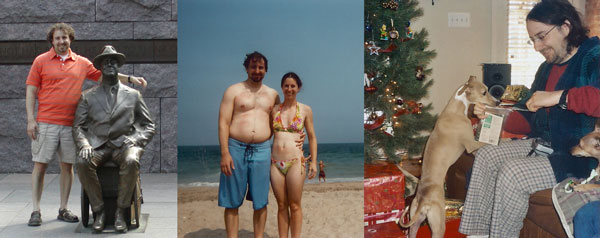
Initially it was all good—I could run 6 miles a day and was losing weight. I hadn’t changed my eating, wasn’t stretching, and I was only doing minimal weight training. When my weight loss plateaued, I’d just run further. Towards the end of my running career, a short run was 8 miles, and a long run was as much as 20-24 miles. I was running six days a week, sometimes twice a day. You can guess what happened next… I developed plantar fasciitis in my right foot, then in my left foot, and an old knee injury flared up. The last marathon I ran was terrible, I had plantar fasciitis in my right foot, and my left knee kept going out. Every step was excruciating. I went to a podiatrist, and got put on orthotics. I couldn't run the weight off anymore.
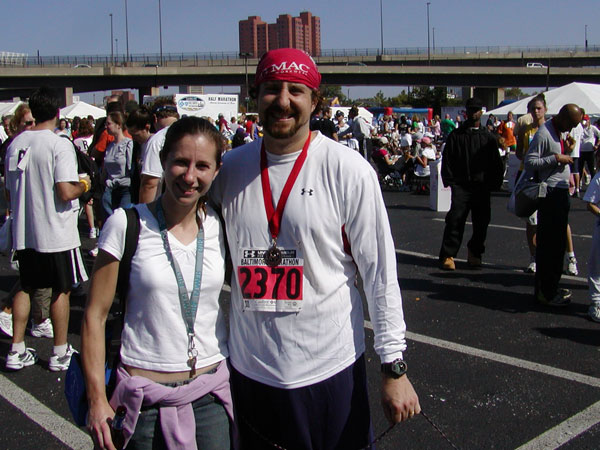
Since college, I’d always lifted weights—the typical guy things, bench and maybe some push ups—but my main focus was running. For my 36th birthday, I asked my parents for training sessions with a trainer at Ron Z Boxing in Baltimore. I was still running at this time, so I ran for cardio, and trainer, Ron, led my weight training. He tried to tell me about diet, but I mostly ignored him since I thought all I had to do was out-exercise my calories. I thought I knew more because I was a doctor. His initial workouts built my strength foundation, but it included more typical weight room training than I do now.
Unfortunately I had to leave Baltimore. I had a bunch of medical student loans that were coming due, and I joined a government program that reimburses physicians for working in a needed area. Relocating to Alabama was part of the program. I only found terrible gyms Alabama, and after wasting a lot of time and money with a trainer who wasn’t very good, I decided to try CrossFit. I was a little leery of it, but there was nothing else to try in my area, and I didn’t know enough to do my own programming. I quickly discovered that I wasn’t too good at the Olympic lifts, but I really liked the all the gymnastic work we did. I was pretty good at
push-ups and pull-ups! My lack of coordination actually helped—when everyone was learning how to do kipping pull ups, I couldn't figure out how to do them. So when a workout called for a ton of kipping pull ups, I would do all mine strict, and started building incredible strength.
Before I moved to Alabama, I finally decided to try my old trainer’s advice and started eating a higher protein diet with fewer carbs. More muscles started to appear and I developed six pack abs while doing less cardio. As a physician I thought it was insane that my trainer knew more than me about diet!
I wasn’t very satisfied with the first CrossFit gym—they didn’t like individuality and I also developed a lower back strain. I wanted to figure out why I hurt myself and how to do more of the bodyweight movements I loved. And I started working out at CrossFit Mobile Midtown which was more supportive.
I wish I could remember where and how I first found
Convict Conditioning—it blew me away! I'd never heard of a back bridge before reading the chapter on bridging. Since I had a back injury, Paul Wade’s description of a "bulletproof back" sounded awesome. One arm handstand push-ups also intrigued me. About the same time, I stumbled onto Al and Danny Kavadlo's online videos without knowing they had any connection to
Convict Conditioning until I saw the cover of
Convict Conditioning Vol. 2.
I have a hard time with dogma or people telling me there’s only one way to do something. I like how the freestyle bar workouts, street workouts, and calisthenics are open to interpretation. They allow you to express yourself in your own way, which really fits in more with my life philosophy. As
Al and Danny said, "We'll give you the basic colors, now you do the artwork".
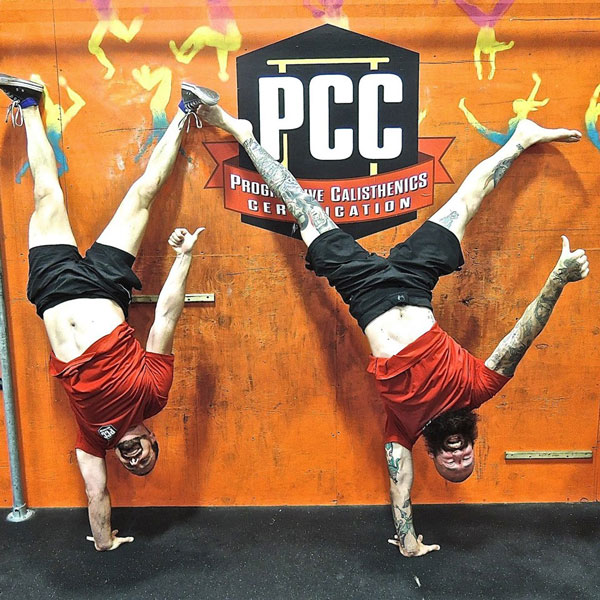
Dragon Door: You’ve described yourself as uncoordinated, what advice do you have for people who want to get started with calisthenics but feel uncoordinated?
Bradley Sadler: Even though I don’t feel uncoordinated anymore, I honestly think that being a little uncoordinated is good in the beginning. It kept me from doing things that could hurt me! I started with basic pull ups and push ups to get strong. Strength brings more body control for the higher level moves. I recently heard an interview with
Danny Kavadlo, who said he was always picked last for every team when he was growing up—just like me. I’d like to believe he was just as uncoordinated as I was in the beginning.
The high skill, crazy things on YouTube and in gymnastics used to seem completely out of reach for me, but with a basic solid foundation—it’s taken me about 5 years to build the strength I have now—my attitude has changed. Everything is possible and I’ve accomplished many moves I used to think were impossible. I don’t think that being uncoordinated should prevent anyone from starting, as long as they start by building the basics. The body will eventually start doing what you tell it to do once you develop the strength and neuromuscular connections!
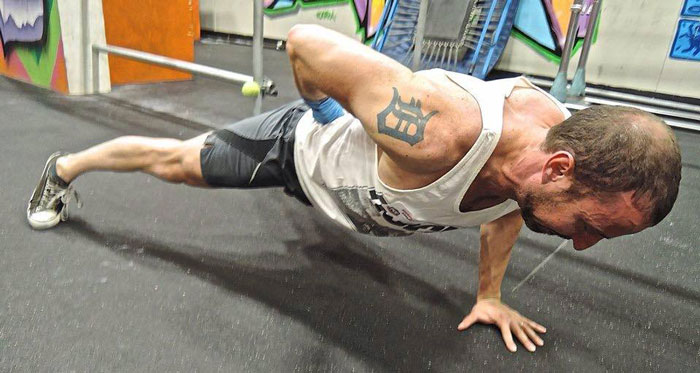
Dragon Door: Other than the basics, were there any particular drills you found useful for coordination?
Bradley Sadler: I am always trying to vary my workouts. On some days I just work on strength, on other days I do explosive workouts. It’s important to do more than just one thing. I try to train a little bit of everything—explosiveness, speed, running, coordination, agility drills, strength drills, and I base my workouts on how I'm feeling. I generally approach a workout with an idea of what I'm going to do, then I might tweak it a little bit depending on how I feel that day. I think it’s more important to learn to listen to the body and adjust the workouts—though that might only work for very motivated people!
Dragon Door: What was your favorite move from the PCC?
Bradley Sadler: I like everything, but I love and am really good at doing
one-arm push ups. Honestly, I really liked learning the moves that I wasn’t very good at, but was able to improve at the PCC. The back bridging was awesome, especially when we went through all the progressions—I felt like I got better at it. Elbow levers are another move I had trouble with on my own. At the PCC, Danny watched me struggle and suggested a technique on an elevated surface to help with my mobility and BOOM! I got the elbow lever! Now I do elbow levers all the time. I was able to get one on the ground just last week.
Dragon Door: What was Danny's cue?
Bradley Sadler: At first I couldn’t do the two arm elbow lever because of my shoulder mobility, so he had me try it with one elbow in and the other arm out. Even though this is also a progression for the one arm elbow lever, I thought it was really easy, and I was able to do it. I just recently achieved the two-arm elbow lever on the ground less than a month after the PCC.
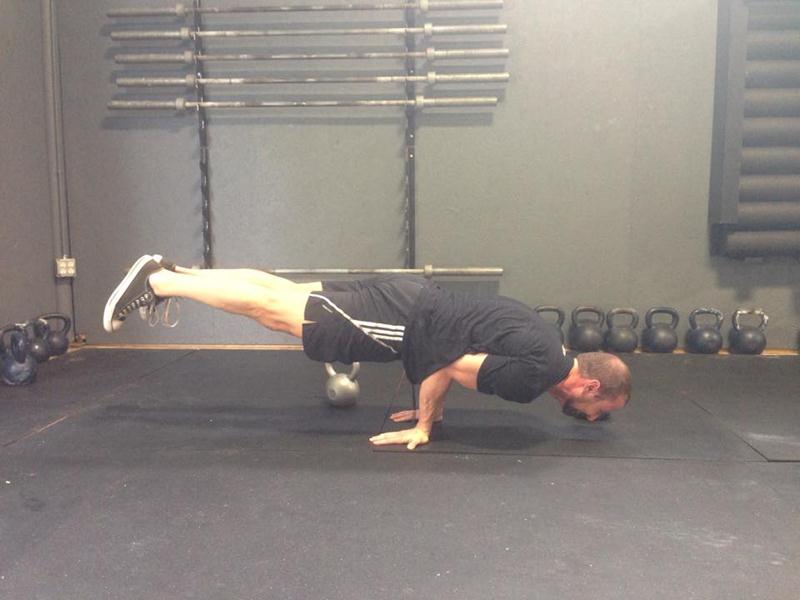
Dragon Door: What else are you working on since the PCC?
Bradley Sadler: I think it's important that once we attain something, we continue to develop it along with our other goals. I always want to do so many moves, and I want to be one of the first to do the one-arm handstand push up. Even though it’s not the usual progression, I’m working towards it by gradually raising the height of my legs when practicing one-arm push ups. I also want to get better with the back lever and front lever. Of course I’d love to do the
one-arm pull up, too.
For the past year I have been working on getting a really good, clean pistol squat. Lower body mobility is a problem with me, but it improved along with everything at the PCC. Now I’ve started with
Explosive Calisthenics, and am working to get a kip up.
Dragon Door: I saw you describe yourself as a fitness enthusiast, do you also have any aspiration to train others?
Bradley Sadler: I'm too busy as a doctor to be a trainer, but I help my wife and others at the gym. The coaches at my current CrossFit gym are really supportive and recently let me coach one of my friends on the bar muscle up. I’ve used a lot of what I've learned from
Convict Conditioning, Al, Danny, and your (Adrienne’s) videos to help my wife get strong. She can now do five pull ups, and recently did her first handstand push ups! At our gym they were using a different progression, but I taught her to do pike push ups to get the necessary triceps strength. I’m about to head out into private practice which is kind of scary, but it will also let me connect my job with my passion. I’d like to devote part of my practice to helping people with eating problems or poor fitness.
Dragon Door: A physically fit doctor could be very motivating! How did you choose psychiatry?
Bradley Sadler: In my second year of medical school I took a neuroscience class, and was fascinated with the brain and behavior. During my third year rotation in psychiatry, I realized I could see myself as a psychiatrist. I graduated first in my medical school class (tied with three people), so I could have chosen anything, but I chose psychiatry because I love it.
Dragon Door: What do you think are some of the neurological benefits of calisthenics?
Bradley Sadler: I recently wrote a post for the
Strong Medicine blog about the benefits of exercise for people with mild to moderate depression. On the way home from the PCC, I was also thinking about how this kind of exercise brings you into a
larger community. It connects us to people with similar interests. It’s important for people to be connected—at least 90% of the patients I see feel disconnected from others.
I also think it’s good for the brain to continue learning in all modalities. I’m always reading and learning new things in psychiatry, so I've got that covered, but now my brain can also continue to develop in a neuromuscular way. I have so much more control over my muscles, and while I don’t have any data to prove it, I believe it will help me later in life.
Having goals and accomplishing those goals is important. About 99% of the patients I see don’t have realistic goals to achieve, so they’re unable to feel that satisfaction. When I did a slow muscle up (and my form needs improvement) for the first time at the PCC, my head almost exploded because I was so excited. I’d like to see others accomplish their goals. Sitting on the couch, watching TV and disconnecting yourself from society will not get you there.
Dragon Door: What really inspired you to sign up for a three-day PCC workshop far from home?
Bradley Sadler: When I first thought about signing up for the PCC I wasn’t sure about it because I wasn't a trainer or a high level athlete. I never even played sports in college! I wondered if I would be wasting my money, but I saw Al's responses online when people asked about the PCC. He said that the
PCC workshop is for trainers and fitness enthusiasts. When I heard that, I knew I was doing the right thing. I think the PCC is great for trainers, and all the progressions are wonderful for developing the skills to teach others.
With no real aspirations to become a trainer, I still had the most amazing weekend. It was super helpful because nothing takes the place of hands on, face to face training. I would encourage other fitness enthusiasts, to go. The payoff in skills learned is immeasurable and I feel like I got every dollar's worth. I was overjoyed with the workshop.
Back